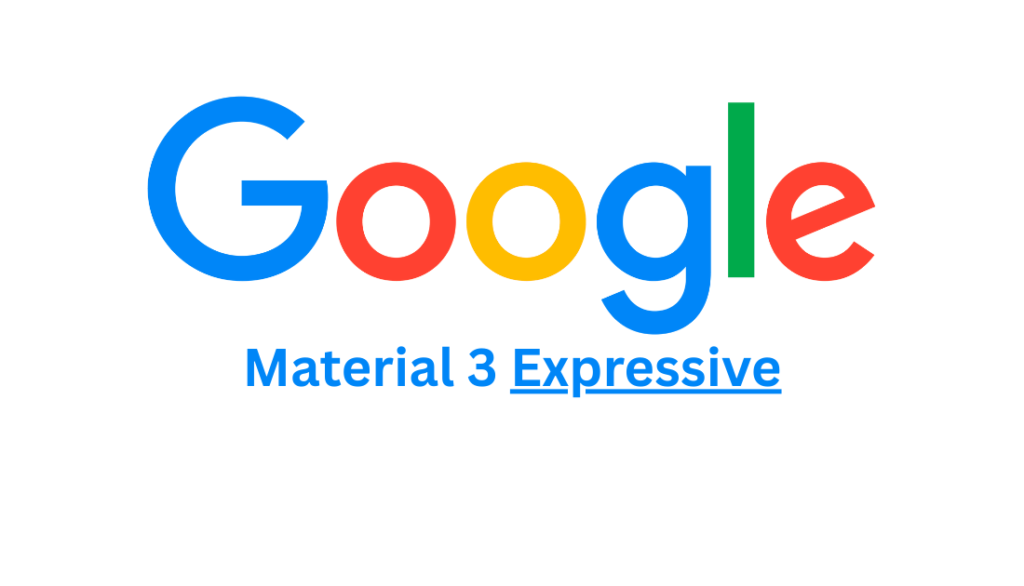Google appears to be preparing a significant update to its Android design system.
A recently removed blog post, along with the session schedule for the upcoming Google I/O developer conference, has revealed details about Material 3 Expressive—a new iteration of the Material Design language.
This update seems poised to build on the personalized aesthetics introduced by Material You, bringing a stronger focus on emotional engagement, usability, and accessibility.
From Material Design to Material 3 Expressive
Since its launch in 2014, Material Design has provided the design framework for Android and many Google apps, defining standards for layout, motion, typography, and interaction.
In 2021, Google introduced Material You (also referred to as Material 3), which prioritized dynamic personalization by adapting UI elements based on users’ wallpapers and preferences.
Material 3 Expressive appears to be an evolution of this concept rather than a complete redesign. The updated system is expected to introduce more vibrant shapes, colors, and layouts to make interfaces more visually distinct and intuitive.
According to the leaked information, the emphasis is on creating “interfaces that connect with people on an emotional level” while remaining accessible and user-friendly across a diverse range of users.
Improved Accessibility and Visual Clarity
One of the key goals of Material 3 Expressive is to improve accessibility without compromising design flexibility.
Updates are expected to enhance visual clarity, especially for older users or those with visual challenges. This aligns with Google’s ongoing commitment to inclusive design, making digital experiences easier to navigate for a wider audience.
While expressiveness is central to the new system, developers are still encouraged to follow platform conventions and tailor their designs appropriately. Expressive design elements are intended to highlight important functions, but not at the cost of consistency or usability.
Official Announcement Expected at Google I/O
Material 3 Expressive is likely to be officially introduced at the upcoming Google I/O conference.
A scheduled session titled “Build next-level UX with Material 3 Expressive” will walk developers through emotional design patterns and share alpha-stage code and design assets, enabling early testing and adoption.
Features and Enhancements in Material 3 Expressive
In-Depth User-Centered Research
According to reports, Material 3 Expressive is the result of one of Google’s most thoroughly researched design efforts.
Over 18,000 participants took part in 46 rounds of design and usability testing. Findings indicated that users were able to locate interface elements up to four times faster compared to previous Material 3 designs.
Usability improvements were observed across all age groups, helping bridge generational gaps in digital interaction.
Introduction of New UI Components
New components such as split buttons and enhanced floating action button (FAB) menus aim to improve interface interaction.
For instance, a split button could let users choose between replying, forwarding, or marking an email—reducing the need for multiple steps. FABs are also being reimagined with more fluid animations and extended menus for better usability.
Advanced Theming Capabilities
Building upon the dynamic color system introduced in Material You, Material 3 Expressive expands theming options with adjustable contrast levels (standard, medium, high) for greater accessibility.
Color palettes are still derived from user-selected wallpapers, but with more customization and comfort for users with different visual needs.
Updated Typography and Shape Systems
The revised typography system organizes text into clearer categories—display, headline, body, and label—improving text hierarchy and readability.
A new shape system also allows components to be categorized by size and elevation (small, medium, large), adding depth and structure to the UI without overcomplicating the visual flow.
Integration with Development Tools
Google is equipping developers with robust tools to adopt the new system quickly. The Material Theme Builder helps visualize and create custom themes, while the Material Design 3 Design Kit offers pre-built components and design templates.
These resources aim to reduce development overhead and promote consistency across Android applications.
Though the initial announcement may have been released unintentionally, the early information reveals a focused evolution of Android’s design system.
Material 3 Expressive blends visual creativity with practical improvements, supporting clearer, more responsive, and emotionally engaging user experiences.


